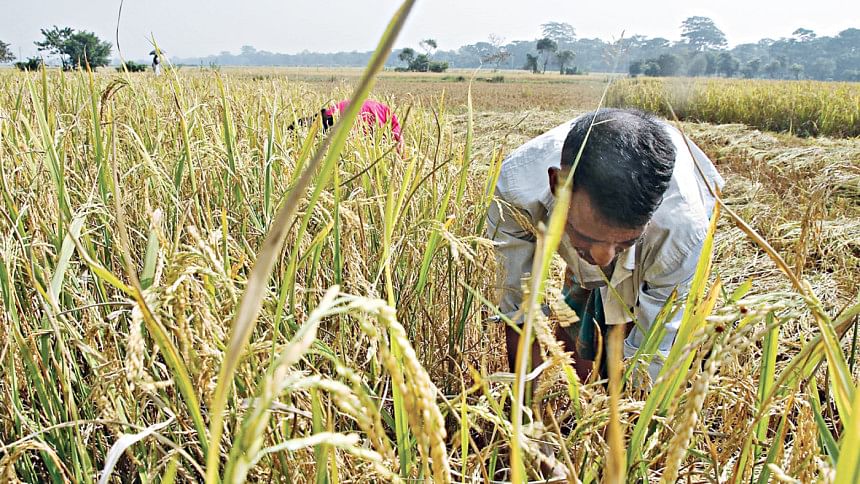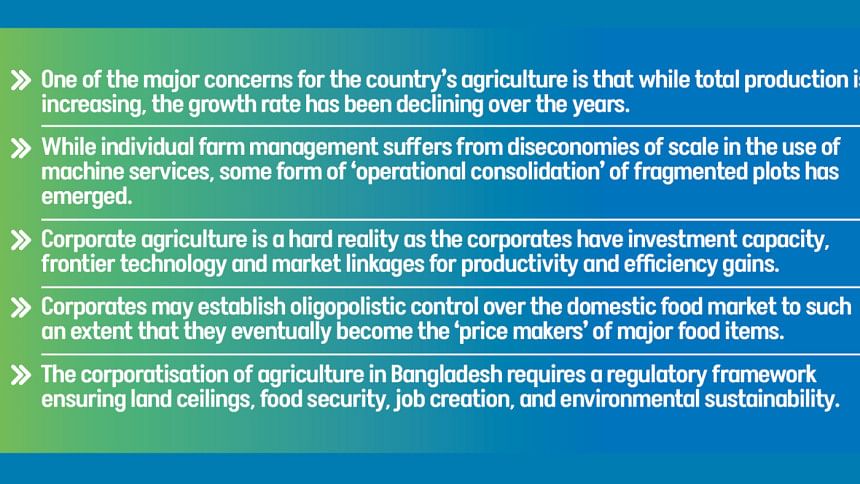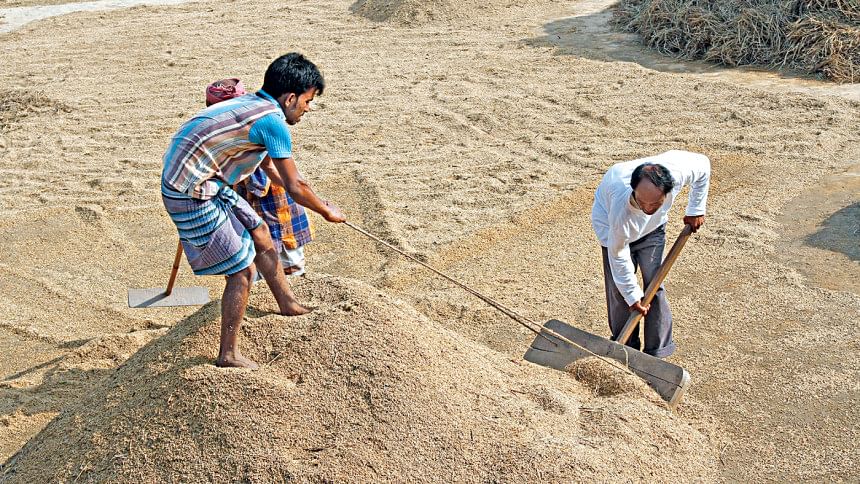Why is there a debate about corporatisation in agriculture?

Agricultural corporates have evolved globally alongside liberalisation policies that have reshaped agricultural production to enhance productivity, profitability, and efficiency on both technical and economic grounds. A dominant form of agricultural corporatisation has been contract farming, which is widespread across South Asian countries, South America, and Indian states such as Gujarat, Madhya Pradesh, Karnataka, and Maharashtra. Corporates typically operate through direct ownership of, or leasing farmland from, farmers for captive production of industrial raw materials, agro-processing, and value addition to primary agricultural products. This model facilitates increased investment in farming technology and human capital, boosts yields in both crop and non-crop enterprises, generates employment, creates international market linkages, reduces unit production costs, and thereby enhances agricultural productivity and efficiency. These are all well-known textbook arguments in favour of corporate agriculture. However, the nature and functioning of agricultural corporates vary from country to country, depending on factors such as the size of the farming population, farm size, land tenure systems, and cropping patterns.
What, then, is the debate surrounding corporate culture in agriculture? Before delving into this question, let us examine the specific context of Bangladesh's agriculture.
In Bangladesh, a striking 88 percent of the country's 17.5 million farm households are small and marginal farmers, operating on plots of up to one hectare and collectively accounting for roughly two-thirds of cultivated land. On the other hand, large and medium-sized farms constitute only 12 percent, yet they manage one-third of the cultivated land. Agriculture in Bangladesh is also witnessing a steady decline in arable land, a rising number of farms with decreasing average sizes, increasing land fragmentation, diseconomies of scale in farm operations, and persistent yield gaps under individual farm management. Most small farmers are part-time agriculturalists, dividing their efforts between farming and non-farming activities. Many are newly established tenant farmers who own some land while leasing or sharecropping additional plots from both large and small farms on a yearly or long-term basis. One of the major concerns for the country's agriculture is that while total production is increasing, the growth rate has been declining over the years. Additionally, low diversification and significant yield gaps in both crop and non-crop sectors pose a threat to national food and nutrition security.

Historically, individual management was the norm for subsistence-oriented family farming, relying almost entirely on family-supplied labour, draft animal power, homemade farm implements, home-supplied seeds, and traditional animal husbandry practices. However, agriculture has now undergone significant commercialisation, necessitating hired labour, farm machinery, irrigation services, high-yielding seeds, chemical fertilisers, pesticides, and advanced harvest and post-harvest technologies. Many of these critical inputs cannot be owned or efficiently utilised under an individualistic management system. This challenge has been exacerbated by the exodus of family labour from farming, rising labour wages during peak seasons, and increasing cash requirements for purchasing inputs and services from the market.
Recent BIDS scoping studies on agrarian change by Mandal (2024) and Wood & Mandal (2024) indicate that while individual farm management suffers from diseconomies of scale in the use of machine services, some form of 'operational consolidation' of fragmented plots has emerged. Local service providers consolidate small plots into viable command areas for irrigation pumps, power tillers, and harvesters, leading to more efficient use of these improved technologies. This, in turn, results in higher yields and increased agricultural productivity.
Corporates have several advantages, including investment capacity, high-skill technology, risk-taking ability, agro-processing establishments, and access to global markets with large volumes of value-added products. Most debates about corporate agriculture do not centre on whether or not agriculture should be corporatised, as it is already a reality in some form or another. Rather, these debates arise for several reasons. Firstly, corporates are accused of acquiring small farmers' land through the 'politics of land acquisition'. Secondly, the productivity and efficiency gains in corporate farming are not empirically proven, a point strongly emphasised by Indian academia. Thirdly, corporates are likely to prioritise high-value crops for export markets while neglecting the need to increase staple food production. Fourthly, corporates may establish oligopolistic control over the domestic food market to such an extent that they eventually become the 'price makers' of major food items.

The debate over corporatisation in agriculture intensified when Indian parliamentarian Sharad Joshi from Maharashtra made the controversial statement that 'the state should encourage the exit of small and marginal farmers from agriculture by purchasing their land at market prices and providing them with capital and training for non-agricultural careers'. This, along with the earlier Monsanto cotton seed crisis and the recent farmers' bill turmoil in India, has sparked widespread concerns about the impact of corporatisation on smallholder agriculture.
But what do we learn about corporate agriculture in Bangladesh? Firstly, dozens of large and small corporates are already engaged in agriculture. Prominent examples include ACI, Pran, Square, Lalteer, Supreme Seeds, East-West Seeds, AR Malik, Ispahani, Kazi Farms, Paragon, Nourish, Aftab Poultry, Aarong Dairy, and Bengal Meat. Most of these corporations operate through business partnerships and technological support from multinational companies. Secondly, corporates can be classified into several segments of commercial agriculture, such as seeds, poultry and feeds, dairy, food and beverages, retail food chains, and agri-machinery companies. Thirdly, the dominant form of corporate engagement is contract farming, involving crops such as seeds, aromatic rice, potatoes, maize, vegetables, and dairy and poultry products, including broilers and eggs. Fourthly, corporates supply the market with high-quality seeds, improved machinery, technical support, and, in some cases, guaranteed purchases of contract growers' products, all of which contribute to increased productivity and reduced unit production costs. Fifthly, contract farming in Bangladesh remains largely confined to hybrid vegetable seed production, potatoes for export, hybrid maize, aromatic rice, packaged spice products, fruit processing, and poultry production. Sixthly, there is no substantial evidence of widespread land acquisition by corporates. However, each of these companies has acquired land—either through purchase or leasing—primarily for research and development purposes, as they claim. Nonetheless, farmers have raised concerns about poor after-sales machinery services, the aggressive sale of low-quality chemicals, and price hikes for vegetable seeds during peak planting periods.
Our arguments about corporate farming are clear. As mentioned above, fragmented lands belonging to scattered farm households are consolidated while retaining individual ownership rights and plot boundaries. This process plays a crucial role in expanding the scale of production units—such as irrigation, tillage, transplanting, and harvesting—allowing for more efficient and cost-effective operations by contracted local service providers. On the other hand, cooperatives or collective farming have yet to demonstrate a successful model for consolidated farming.
So, what can be done to reduce yield gaps and accelerate the productivity and profitability of farmers, given the rising number of small and marginal farms and the steady decline in arable land?
Corporate farming appears to be a viable option, as corporates possess financial resources, technological expertise, business acumen, and market intelligence. However, its success requires targeted policy support from the government. That said, it is not practically feasible for any corporate entity to acquire large tracts of land in consolidated blocks due to farmers' strong attachment to their land and the high cost of negotiating with numerous landowners, many of whom are absentee landlords. Therefore, corporates can explore alternative approaches.
Firstly, they can expand high-tech interventions through contract farming, an area where they have already demonstrated reasonable success. Secondly, they can adopt the proven model of operational land consolidation by supporting local entrepreneurs in leasing land to cultivate crops or enterprises of corporate interest. This would involve investments in mechanisation, quality inputs, precision farming, and establishing market linkages for the products. Thirdly, corporates themselves can extend high-tech production systems using the land they have already acquired or by leasing additional land under production terms agreed upon with the landowners.
Indeed, the corporatisation of agriculture in a land-scarce country like Bangladesh must be addressed through an appropriate regulatory framework. This should include a maximum ceiling on land acquisition by corporates, crop selection aligned with national food security priorities, the adoption of employment-generating technologies, and the implementation of environmentally sustainable production practices.

 For all latest news, follow The Daily Star's Google News channel.
For all latest news, follow The Daily Star's Google News channel. 



Comments